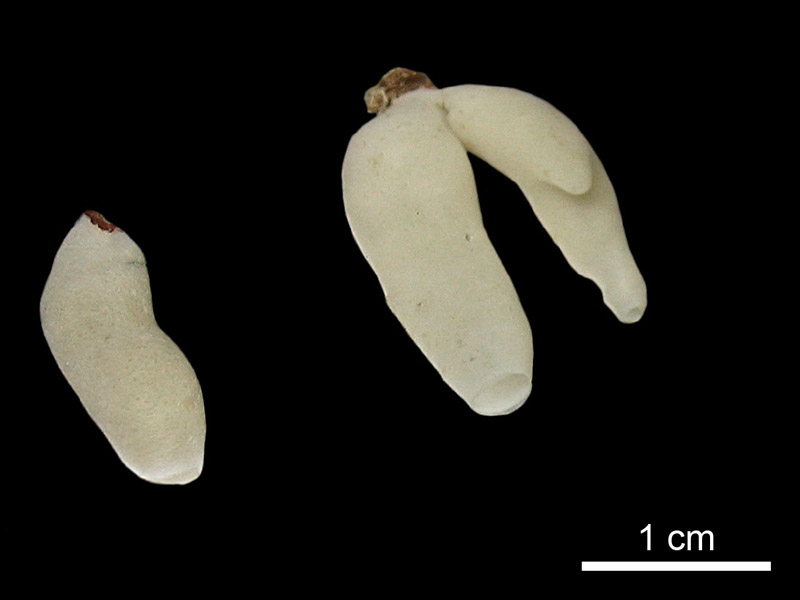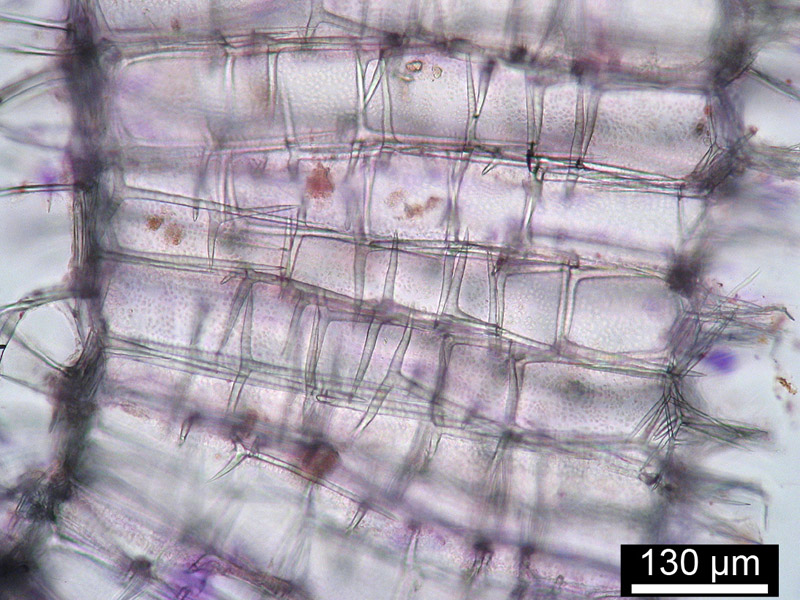Morphological description (show/hide)
| Single tubular sponge with apical osculum, sometimes with simple branching at or near the base | | whitish | | white | | Each tube with one apical osculum | | soft | | smooth | | The choanosomal skeleton supports radial chambers of the syconoid aquiferous system. The radial tubes are supported by an articulated choanoskeleton consisting of sagittal tetractines with shorter apical actines pointing into the radial tubes, and similar shaped triactines. Between the radial tubes inhalant canals are present. Both, radial tubes and the inhalant channels are square in cross section, forming a chessboard-like pattern. A layer of pseudosagittal triactines is presen,. The longer paired actine is pointing towards the atrium, while the shorter paired and the unpaired ray at the very distal part of the radial tubes. The atrial skeleton is formed by tetractines with a basal system tangential to the atrial wall, and apical, sabre-shaped actines reaching into the atrial cavity and sagittal tiractines. | | The ectosomal skeleton consists of a thin layer of tangential sagittal triactines and micro-diactine tufts at the end of the radial tubes. | | Cortical triactines (unpaired actines: 58.9-73.2-81.8 x 6.7-7.4-8 um, paired actines 63-65.8-70 x 6.4-7-7.3 um), sub-cortical pseudosagital triactines (longer paired actine: 106.2-119.8-131.2 x 8.6-9.5-10.2 um, shorter paired actine: 65.4-78.4-86.5 x 8.6-9.2-9.8 um, unpaired actine: 53.9-75.4-91.9 x 8.1-10-12.9 um), tubar tetractines (paired actines: 80.3-84.9-90.2 x 8.5-10-11.2um, unpaired actine : 125.2-140.6-152.3 x 8.9-10.5-12.2 um, apical actine: n.a.), tubar triactines (about the same size as tubar tetractines, but lacking apical ray), Atrial triactines (sizes n.a.) and tetractines (e.g. unpaired actine 184 x 7.2 um, up actine 107 x 9.5 um, apcial actine e.g. 138 x 13.6 um). All measurements with minimum- mean- maximum value from measurements of 5 spicules, other from single spicules. | | cortical micro-diactines (77.4-87.0-94.3 x 4,9-5.5-6.4um, n=10) |
|



